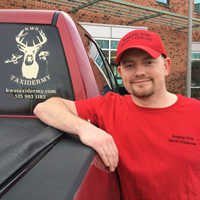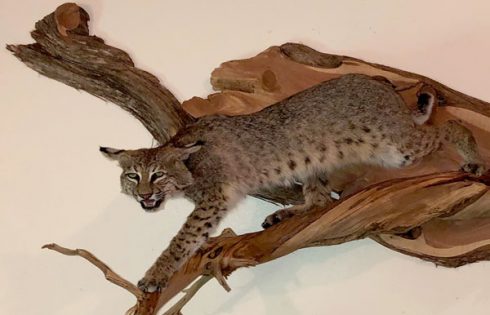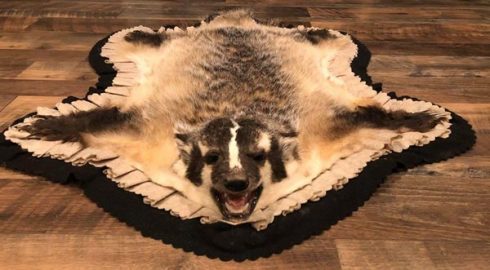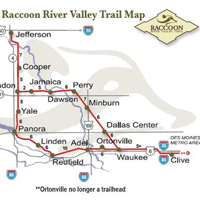Timothy Smith – Keeping Wild Spirits Taxidermy

It’s hunting season and this month we bring you an interview with local taxidermist and member of the Adel Fire Department, Timothy Smith who explains this unique art form that is steeped in tradition.

Timothy Smith – Keeping Wild Spirits Taxidermy
As a lifelong hunter, Timothy has always had an interest in taxidermy, or the art of preparing, stuffing, and mounting the skins of animals with lifelike effect.
He grew up near the Hutton Valley Taxidermy School in Saint Charles, Iowa where he would later attend for his certification.
After 4 years of active duty in the Marine Corps, with deployments in Iraq and Afghanistan as a Combat Engineer, Timothy was ready to dedicate himself to the lost art of taxidermy.
“In Afghanistan my job was to find IEDs so the bomb squad could blow them up. My job was Combat Engineer- the most casualties come from that job. We’re literally the first in task force to clear the path for the infantry; just swinging a metal detector looking for bombs. So I ended up reenlisting in 2013 and retrained as an Airport Firefighter. I was stationed in Minneapolis for the rest of my time in the service with the Marine Corps Department of Defense Fire School. It’ll be 5 years in May that I’ve been on the Adel Fire Department.”
“I moved to Adel in 2015 and my wife Tammie and I got married a year later. Most people will know me because of Tammie, or as an Associate at the DeSoto Intermediate building. I’m also a member of the American Legion, I do the Color Guard for the Football Game, and we’re pretty active in the Methodist Church and ADM schools.”
Timothy knows the common misconceptions about hunting and taxidermy and hopes his artwork can help others share in his conservation mindset.
“Most hunters and fisherman I know would rather spend all day, every day out there experiencing nature than fill their tag in the first 15 minutes opening day. They want to sit and see the animals that are out there. Maybe you’ll be in the deer stand and see 20 wild turkeys walking underneath you. That’s not something you see everyday.”
For those with a hunting or fishing background, taxidermy is a tradition. Not of taking a life or displaying a trophy, but of bonding with one another and with nature. While there are those who seek only the trophy, there are many conservationists that view taxidermy as a way to preserve memories, save natural spaces, and honor the animals.

“With hunting in general, a lot of guys do it to spend time with family and friends, to make memories, so with taxidermy, it makes the story last forever. If a picture’s worth a thousand words, why not have the real things?”
Those who fish may best understand- the DNR often has “slot limits” which require fishermen to throw back any that are too large. This can lead to an even greater tradition: “Fish Tales” about 20 pound Muskie and Catfish big enough to swallow the boat. Instead, fishermen take a photo of their catch, along with a few measurements, drop the fish back in the water and then have Timothy create a reproduction. The memory of the experience- long hours in a boat or hauled up in an ice shack with friends and family before finally getting that stellar catch- can now live on.
For a reproduction fish, Timothy will trim the Styrofoam cast, attach artificial fins, and hand-paint the design. While this sounds like a simple process, each step is meticulous and must be given its proper respect to complete a true reproduction that is nearly indistinguishable from the real thing.
With animal mounts, Timothy first tans the skin creating leather, then stretches and attaches that leather to a Styrofoam form that is cut and prepped. Rugs, wall hangings, hats, coats, and more can be made from animal pelts. A bug repellant glue is used to keep moths away, and glass eyes are selected from dozens of options per species. Each step is important and time consuming when capturing a memory and recreating a unique, lifelike work of art.

“For the tanning process you have to get the skin completely dry and salted and that takes a week. Then re-hydrate it and that takes a week. So it’s an hour or two of work, then a week of waiting. That’s why it takes 6 months to a year to get your mount. Just tanning the hide will take a month; its quite the process. I didn’t understand until I started doing taxidermy- I knew it was a long process but the minute details! It’s crazy how detail oriented it is, and how the little stuff adds up- like if fish scales fall off, I have to glue each one back on. Taking that time to be precise, and just the amount of work that goes into each mount, that’s why mounts cost what they do.”

At Keeping Wild Spirits Taxidermy, artistry and conservationism are the driving forces. As an avid member of Pheasants Forever and Ducks Unlimited, Timothy believes strongly in preserving nature- he will often buy extra tags as his donation to the DNR. The DNR invests their funds into conservation areas, waterway access, boat ramps, and more. When creating mounts, he likes to find out the hunter’s story; or why this hunt is to be remembered.
“I’m trying to open people up to new designs- more than just an upright shoulder mount that looks just like every other deer pose. I want people to think about what they saw that animal doing every time they look at it. As a hunter, maybe the animal was sneaking through the woods, or they saw the deer sniffing a branch. Fish may be jumping out of the water or chasing another fish. Its about recreating the animal’s habitat, or the experience of the hunt. I want to capture that in the taxidermy.”
For each mount, Timothy averages 15-20 hours of work.

“When you get into showing the animal in its natural habitat that’s what makes it artwork rather than a trophy. Most people don’t have any idea how many options there are. When you go to Cabella’s or Bass Pro Shop and you see full body mounts- tons of mounts all over the place- all those mounts are doable.”
“I have about 15 catalogues of different kinds of mounts for all different kinds of animals- poses, sizes, and variations. During the consultation it can take 30 minutes to 3 hours to pick out exactly what the client wants. I’m willing to spend the time to get them what they want because taxidermy is a big purchase. I’d rather take an extra 10-15 minutes at the beginning to make sure the customer is satisfied and knows all the unique options available.”
Timothy’s designs focus on movement and life- his favorite mounts include a bobcat springing from its driftwood perch, fish chase others through clear water, a deer stops to sniff and admire the changing colors of the leaves. Each pays homage to the animal’s spirit, habitat, and the hunter’s experience.
 “I’m trying to open people up to new designs- more than just an upright shoulder mount that looks just like every other deer pose.
“I’m trying to open people up to new designs- more than just an upright shoulder mount that looks just like every other deer pose.
I want people to think what they saw that animal doing overtime they look at it. As a hunter, maybe it was that he was sneaking through the woods, or sniffing a branch.
Fish may be jumping out of the water or chasing another fish and I want to capture that in the taxidermy.”
“What I’m trying to do is express the beauty of that wildlife, for it to be carried on.
The hunter saw that animal in the wild and thought. ‘That was an awesome looking deer or fish and I want to keep that experience.’
 Keeping Wild Spirits Taxidermy
Keeping Wild Spirits Taxidermy
20918 Old Hwy 6
Adel, Iowa 50003
Email: KWSTaxidermy@gmail.com
Website: www.KWSTaxidermy.com
Facebook: KWSTaxidermy






